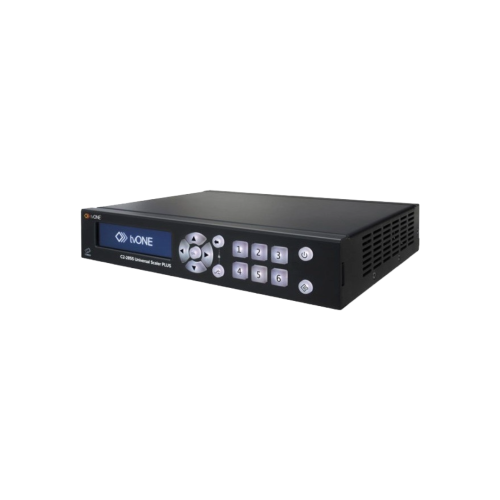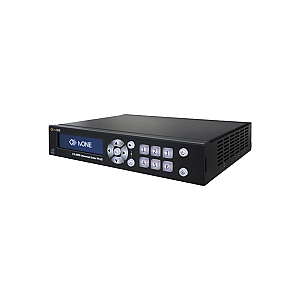The tvONE C2-2855 is a universal scaler designed for audiovisual integration in demanding medical environments. It enables smooth conversion between analogue and digital signals (HDMI, SDI, DVI, YPbPr, etc.), ensuring optimal compatibility with medical imaging equipment, surgical cameras and high-resolution monitors. With its intuitive interface, network control options and high-precision video processing, it is ideal for operating theatres, simulation rooms and telemedicine applications. The C2-2855 delivers stable, accurate and latency-free image quality, which is essential for the live broadcast, recording or retransmission of medical procedures.
Universal Scaler C2-2855 - Good Condition


Description
tvONE C2-2855: Professional Video Processing for Medical and Hospital Applications
The tvONE C2-2855 is a high-performance universal scaler designed to provide a reliable, accurate and flexible solution in modern medical environments. Used as a video processing interface, it manages, converts, synchronises and redistributes various AV signals from hospital equipment, endoscopes, surgical microscopes or surgical cameras. The C2-2855 is an essential tool in digital operating theatres, telemedicine rooms, teaching amphitheatres and clinical simulation laboratories.
Compatible with a wide variety of sources (HDMI, SDI, DVI, YPbPr, composite, YC), it enables bidirectional conversion between analogue and digital signals while ensuring optimal image quality up to 1080p. It can process PC signals up to 1920x1200 and perform up, down or cross conversions, making it particularly useful for harmonising equipment flows from different generations. Its adaptive deinterlacing, temporal interpolation and motion compensation technology ensures a smooth, clear and artefact-free image – crucial for live medical procedures.
The intuitive front panel and PC software interface allow for quick configuration of the unit. Up to 12 presets can be stored, making it easy to recall specific scenarios (surgery, live transmission, recording, educational demonstration). Features such as Picture-in-Picture (PIP), logo or still image keying, and smooth transitions (Cut, Fade, Wipe) enhance its potential in broadcast or procedure recording contexts for medical training or archiving.
The C2-2855 is also a complete audio/video solution, capable of embedding and de-embedding audio on HDMI, SDI or DVI signals. With control options via IP, RS-232 or locally, it can be integrated into an existing hospital infrastructure or audiovisual control room.
Designed for intensive use, it offers the signal stability that is essential in medical environments. Its compact format allows easy integration into a medical rack or technical bay, and its low latency (1 to 2 frames) ensures real-time transmission, which is essential for image/sound synchronisation during procedures.
Features
- Cross-conversion of video resolutions: ideal for adapting a 576i endoscopic signal to HD monitors
- Zero visible latency (1 to 2 frames): essential for live broadcasts of procedures
- Recording and overlaying hospital logos or visual indicators
- Adjustable PIP mode: perfect for simultaneously displaying two sources (e.g. surgical camera + educational presentation)
- Centralised or local network control for integration into an audiovisual monitoring station
- Guaranteed video stability, even with analogue or mixed signals
Technical Details
- Video inputs: HDMI, SDI, DVI, Composite, YC, PC/HD, RGB, YPbPr
- Video outputs: HDMI, SDI, DVI, Composite, YC
- Supported resolutions: Up to 1920x1200 (PC), 1080p/60 (HD)
- Zoom up to 10x, reduction up to 90%, manual or AutoSet cropping
- Frame rate conversion: Temporal with adaptive interpolation
- Medical signal compatibility: HD endoscopic cameras, multimodal sources
- Control: OLED panel, RS-232, IP, Windows software
- Video formats: NTSC, PAL, 3G-SDI, YUV, RGBHV
- Dimensions: 42 x 218 x 189 mm
- Weight: 1.26 kg
- Power supply: 12 VDC, 1.5 A; operating temperature up to 40°C
Compatible Accessories
- Medical rack mounting kit (RM-220)
- Suitable medical SDI, HDMI, and DVI cables
- External controllers (console, PLC or monitoring software)
- HD medical video recording systems
- DVI/HDMI-compatible surgical monitors